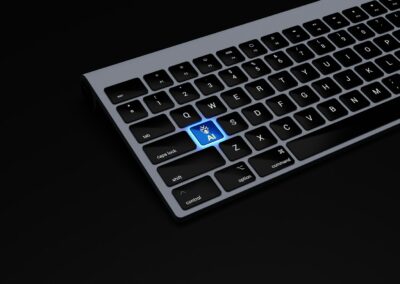Cognitive Load in HCI: Balancing User Experience and Mental Workload in the GCC
One crucial aspect that HCI explores is the cognitive load associated with using technology. Understanding and managing cognitive load is essential for creating user-friendly, efficient, and enjoyable technological experiences, particularly in the rapidly growing tech hubs of Saudi Arabia and the UAE. The realm of Human-Computer Interaction (HCI) is vast and multifaceted, encompassing everything from the design of user interfaces to the study of user behavior.
Understanding Cognitive Load: A Cornerstone of HCI
In essence, cognitive load refers to the mental effort required to process information and complete tasks. In the context of HCI, cognitive load can arise from various factors, including the complexity of an interface, the amount of information presented, and the user’s familiarity with the technology. High cognitive load can lead to frustration, errors, and decreased productivity. Conversely, low cognitive load can result in a smooth, enjoyable, and efficient user experience.
Types of Cognitive Load
HCI researchers have identified three main types of cognitive load: intrinsic, extraneous, and germane. Intrinsic load is inherent to the complexity of the task itself. Extraneous load is imposed by the design of the interface and can be reduced through effective design practices. Germane load is related to the mental effort required to learn and understand new information.
Measuring Cognitive Load
HCI researchers employ various methods to measure cognitive load, including subjective self-reports, physiological measures (e.g., heart rate variability), and performance-based measures (e.g., task completion time and error rates). These measurements provide valuable insights into the cognitive demands placed on users by different technologies and interfaces.
The Role of HCI in Mitigating Cognitive Load
HCI plays a pivotal role in designing technologies that minimize cognitive load and optimize the user experience. This is achieved through a combination of research, design principles, and usability testing.
Simplifying Interfaces
One of the most effective ways to reduce cognitive load is to design simple, intuitive interfaces. This involves minimizing unnecessary information, using clear and concise language, and organizing content in a logical and easy-to-follow manner. A well-designed interface can significantly reduce extraneous cognitive load, allowing users to focus on the task at hand.
Progressive Disclosure
Progressive disclosure is a design technique that involves revealing information to the user in a step-by-step manner, rather than overwhelming them with everything at once. This can help to manage cognitive load by breaking down complex tasks into smaller, more manageable chunks.
Personalization
Tailoring interfaces to individual users’ needs and preferences can also help to reduce cognitive load. This can be achieved through features such as customizable dashboards, personalized recommendations, and adaptive learning algorithms.
Cognitive Load in the GCC: A Regional Perspective
In the GCC region, the importance of managing cognitive load is particularly pronounced. With rapid technological advancements and a diverse user base, ensuring that technology is accessible and easy to use is crucial for maximizing its impact.
Arabic Language Interfaces
Designing interfaces that are culturally relevant and linguistically appropriate is essential for minimizing cognitive load in the GCC. This involves developing intuitive Arabic language interfaces that cater to the specific needs of Arabic-speaking users.
Mobile-First Design
Given the high penetration of mobile devices in the region, prioritizing mobile-first design is crucial for reducing cognitive load. This involves creating interfaces that are optimized for smaller screens and touch interactions.
Training and Education
Providing adequate training and education on how to use new technologies can significantly reduce the cognitive load associated with learning and adoption. This is particularly important for older users or those who are less familiar with technology.
Conclusion
Understanding and managing cognitive load is a fundamental aspect of HCI research. By applying the principles of HCI to the design of technology, businesses and governments in the GCC can create more effective, user-friendly, and enjoyable experiences. This will not only enhance user satisfaction and productivity but also contribute to the region’s ongoing digital transformation.
The Future of HCI and Cognitive Load
As technology continues to evolve at a rapid pace, the field of HCI will play an increasingly important role in ensuring that technology remains accessible and usable for all. This includes exploring new ways to measure and manage cognitive load, developing innovative design solutions, and educating users on how to interact with technology effectively. By embracing HCI principles, the GCC can build a future where technology empowers and enhances human capabilities.
Investing in User-Centric Design
The companies and organizations that prioritize user-centric design and invest in HCI research will be the ones that thrive in the digital age. By creating technologies that are easy to use, enjoyable, and effective, they will not only gain a competitive advantage but also contribute to a more inclusive and equitable technological landscape in the GCC.
#HCI #cognitiveload #technology #userexperience #mentalworkload #SaudiArabia #UAE #Riyadh #Dubai #interfacedesign























